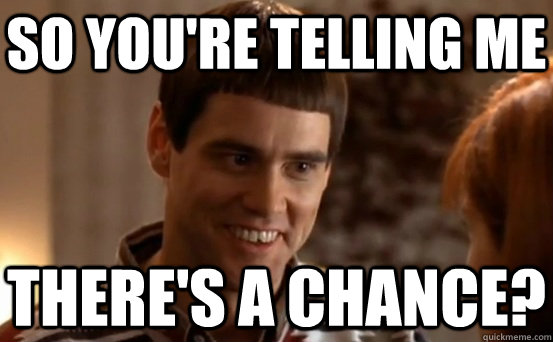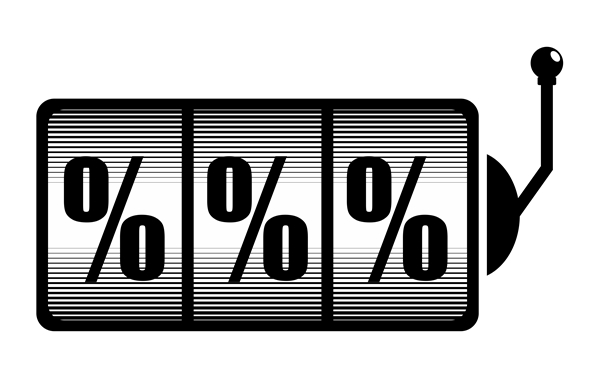
“We are not actively discussing negative interest rates at this point, but it’s in our toolkit and never say never.”
Bank of Canada Governor, Tiff Macklem
That comment from Canada’s monetary kahuna, Tiff Macklem, put a glimmer of hope in the eyes of variable-rate mortgagors this week.
By leaving the door open to sub-zero rates, even if just a crack, some rate floaters are remaining optimistic about the potential for further prime rate cuts.
But for prime rate to drop again, Canada’s overnight rate would have to fall to 0% or below, something the BoC doesn’t relish.
In 2015, the Bank told us, “experience indicates that negative interest rates are indeed a viable policy tool.” But in May, Macklem reminded everyone there are “disruptive effects of going negative.”
“It’s hard to explain to depositors why their deposits are shrinking in their account when they’re not taking any money out,” he said. (Meanwhile, Canadian bank fees—among the highest in the world—shrink deposits every day.)
Macklem continued, “When you’ve already got a disrupted financial system, you may want to be hesitant about introducing a new source of disruption. So, when you look at the current situation, yes, I’m quite comfortable with the effective lower bound where it is (at 0.25%).”
Macklem’s predecessor, Stephen Poloz, was also less than embracing of sub-zero rates, stating:
- “At this stage, it would be not sensible to think of interest rates going lower than this.”
- “We don’t like the idea…It’s not a happy place for the banking system.”
- “We consider this (0.25%) to be the effective lower bound.”
Clearly, there would have to be almost nothing left in the BoC’s arsenal to compel it to risk such economic distortions with a minus 0.25% overnight rate.
And those distortions would be very real: asset and housing bubbles, excessive risk-taking, unsustainable debt loads, a less resilient financial system, a disincentive to save and many more.
That’s not to mention the fact that smart people argue over whether negative rates even work. “…Consumers and businesses respond less to interest rate declines when interest rates are already very low,” Poloz once said.
The BoC is well aware of all these downsides and understands that negative rates are the “nuclear” option.

Where Bets Are Now Being Placed
Implied future rates in the bond market suggest a slightly higher probability that the overnight rate will be lower one year from now than higher. But it’s so minor a signal as to almost be meaningless.
Most professional rate watchers project the overnight rate will remain stuck in a sideways channel until at least 2023, according to a recent Bloomberg economist survey.
Others believe the wisdom of the consensus will be turned on its head, given:
- Unprecedented economic stimulus
- Looser inflation policy
- The Fed, and potentially Canada, will let inflation run hot
- That could eventually trigger a government bond sell-off (bond prices and rates move in opposite directions)
- Mounting credit fears in the bond market
- south of the border, for example, public debt levels will soon eclipse economic output for the first time ever
- extreme deficits, particularly persistent extreme deficits, are correlated with higher interest rates
- Inflationary supply bottlenecks from COVID and trade frictions
- Potential for a sooner-than-expected end to quantitative easing as the economy recovers.
So, if you’re looking for reasons why negative rates won’t happen, they’re not hard to find. There are even outlier economists—like Citigroup—who expect 100 bps of rate hikes in 2022.
All this is not to say rates are imminently in danger of blasting off. They’re not. It’s simply to acknowledge that despite the BoC seeming somewhat open-minded to negative rates, it’s still exceptionally unlikely we’ll see them in this credit cycle.
“Fiscal policy tends to be a more powerful tool than monetary policy in…extreme circumstances,” Poloz once explained. That’s why it’s not surprising that the BoC wants Ottawa to open its purse strings more. And the Liberal-NDP alliance seems all too willing to oblige.
With Ottawa resigned to spending its way out of this mess, economic deterioration would have to get far uglier for the BoC to tap its last line of defence: more rate cuts.
And let’s not forget two other truths:
1) the BoC still has other tools that it prefers over negative rates, like additional large-scale asset purchases, collateralized funding for banks at subsidized rates and forward guidance (e.g., pledging to keep rates low for years).
and…
2) Even if rates did go negative, it doesn’t mean prime rate would drop in lockstep. Banks have proven in the past that they’re more than willing to deviate from the BoC and not cut prime to save profitability.
All this is to say, if you’re Lloyd Christmas wondering whether prime rate could sink another 25- to 50-bps then, “yes, there’s a chance.” But not enough of one to hitch your wagon to a variable.

 log in
log in
10 Comments
Good news if your broke this wont matter..if you are a prudent investor and you have money you will now owe the bank for holding your cash for you. CRAZY WORLD we now live in.
If you are prudent saver it is unlikely you just leave this savings in such an unproductive form, as cash.
Okay so I see how negative interest rates will disrupt the banking system. People will either (a) pull their money out and store it in physical form (new business model anyone? “Store your cash here”) or (b) they will put their money to work in one of a multitude of bubbles that will inevitably form. Considering the amount of disruption in the economy as it is…. tourism, restaurants, indoor anything… why are traditional banks so sacrosanct? Maybe it’s time?
You can speak all the Latin you want in the end all I want to know is if I can get a renewal mortgage for less than 1% then.
@Eugene Ross
Go buy a magic 8 ball.
Modern Money Theory is already here, and has been for a while.
As has been so accurately surmised, the Liberal / NDP alliance assures its prominence for years to come.
I posted on here a couple months ago that I thought interest rates would go to negative 10%. While that might seem ridiculous, think about it, rates used to be close to 20%, and they have been trending straightline down for 40 years. First the central banks around the world (mostly private businesses) will eliminate cash and bring in digital fiat currency, then they will go negative rates big time. The banks will engineer your future and engineer that they take as much wealth as is possible from the sheeple.
Has this happened to you? It seems over the years I often get a call from my bank asking me if I should look at locking in to a a different mortgage term (usually 5 year term )to save money. Usually a few months or 6 months later rates are quite a bit lower. This recently happened to me where I got a friendly call from my bank and today rates are close to 1% lower.
@Biff, It doesn’t matter if rates are going up or going down. Banks always contact customers early to extend their terms. It’s what they do. Sell mortgages.
coincidence
Well I have been on variable for over 20 years and most recently got contacted on Aug 18,2020. rates are about 1% lower now. And my experience is that I get a call to lock in to a 5 year term when rates are trending down. I do not recall ever getting a call to lock in when rates make a slight blip up. It is not that hard to predict rate trends, just follow the news, ratespy etc. Rates have been coming down for 40 years as I stated in my post above except for a few short months here or there.